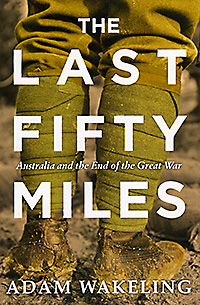In early 1918 Germany was severely affected by the Allied naval blockade, the American Expeditionary Force became stronger by the month and the Austro-Hungarian and Ottoman Empires were visibly crumbling. On the other hand, the Treaty of Brest-Litovsk freed many German divisions to move to the Western Front and Ludendorff decided to seize his last chance for victory in the West by breaking through the centre of the British and French armies, isolating the British from the channel ports and marching into Paris. His Spring Offensive opened on 21 March using massive artillery and air support and new infiltration infantry tactics. The offensive achieved dramatic success: territory captured by the Allies during months of fighting on the Somme was lost in a few days and the Germans appeared on the point of capturing Villers-Bretonneux.
Defending Villers-Bretonneux was essential as its capture would enable German artillery to shell the vital rail junction of Amiens. The Australian Corps was out of the line in Flanders but on 25 March it was ordered south to support Byng’s Third Army north of the Somme. This began the most important Australian contribution to victory in the Great War and The Last Fifty Miles tells the story of the successful Australian defence of Villers-Bretonneux and their battles during the summer and autumn of 1918.
On 8 August, “The Black Day of the German Army” Rawlinson’s 4th Army attacked with Monash’s Australian Corps and Currie’s Canadian Corps breaking through in front of Villers-Bretonneux. German morale was faltering and the British Expeditionary Force and the French Army advanced to the Hindenburg Line during the final 100 days of the war.
The Australian Corps was now incurring casualties that were impossible to replace because of the defeat of conscription at home and the reduction in voluntary enlistments. An order to break up under-strength battalions was unpopular and in many cases successfully resisted.
During the advance to the Hindenburg Line the Australian and Canadian Corps were the spearheads of their respective armies and their contribution to victory had important political effects. Dominion prime ministers sat on the British War Cabinet and the dominions were represented at the Peace Conference.
There is a good index and three maps, which enable the text to be followed without recourse to an atlas.
Although the book’s title “The Last Fifty Miles” refers to the distance the Australians advanced during the months of August to October 1918, Adam Wakeling has written a concise and very readable history of the background to the Great War, the conduct of the war to 1918 and the political and social conditions in Germany and at home in Australia. For a non-professional historian, this is a notable achievement.
Reviewed for RUSIV by Roger Buxton, November 2016

Paperback 316pp RRP: $35.00
Contact Royal United Services Institute about this article.






